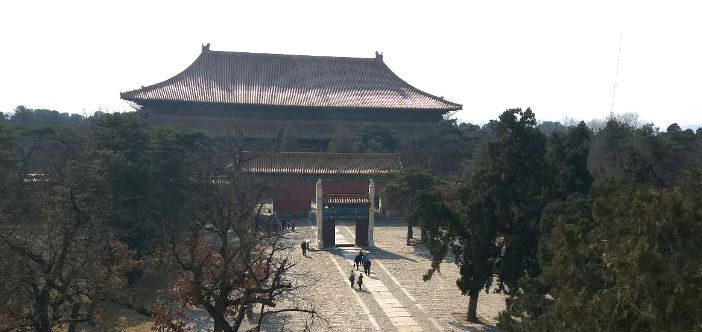Following our recent visit to the Summer Palaces, my family and I decided to round out our tour of Beijing’s imperial heritage, with a trip to the Ming Tombs.
The Tombs are situated in the distant north-east of the city, 50 kilometers from the center. There’s a subway station called Ming Tombs on the Changping line, though it’s 4 kilometers from the complex itself – you’ll need to take a shuttle bus from the station, unless you fancy an hour’s hike. We opted for hiring a bus with a group, and we were glad we did, because even when you arrive there, you’ll need to get around from place to place.
That’s because the Tombs area is not a single site, but a vast necropolis, where thirteen of the Ming Emperors were buried between 1424 and 1644. Only three of the Tombs are open to the public, and also the shendao, or Sacred Way, which is where we began our tour.
The shendao is the ceremonial road by which the officials would approach the Tombs. The main attraction here, especially for kids, is the huge stone statues which guard the path on either side: animals, kneeling and standing, then guards and advisers. The animals include spectacular camels and elephants, but look out also for the xiezhi, a one horned goat which can tell good from evil, and indicates the guilty party by butting them. There’s also a qilin, another mythical beast sometimes known as the Chinese unicorn, in spite of the fact that it usually has two horns.

At the end of the Sacred Way, we got back on the bus, and headed up towards Changling. This was the first of the Tombs, built for the Emperor Zhu Di in 1409. I had visualized something like Pere Lachaise or Highgate Cemetery, but the “Tomb” is more like a palace, or a temple. In fact, it’s not known exactly where the bodies are actually buried – to the disappointment of my sons, who share all healthy children’s fascination with the macabre.
Changling consists of three increasingly impressive courtyards. Ling’en, the Blessing and Grace Palace, hosts a bronze statue of Zhu Di, and displays of jade and imperial clothing. The statue, and most of the items on display, are modern, although some of the jade dates to the Qing dynasty. The “Square City” is a tower which you can climb, and serves as the gateway to the “treasure mound”, a man-made hill which conceals the tomb’s buried secrets.
We can get some idea of what might lie under the treasure mound by visiting Dingling, which was excavated in the 1950s. Two small museums display some of the finds from the dig, but later research revealed a tragic story which is untold at the site itself.
The excavation found the tomb preserved almost intact, with astonishing treasures of gold, silk and porcelain. However the archaeologists had inadequate facilities to store the artifacts, and many of the textiles were ruined. Later, during the Cultural Revolution, Red Guards broke into the museum, destroyed many of the finds and burned the remains of the Emperor and Empress. For this reason most of the items on display are replicas.
However the underground tomb remains a breathtaking sight. It’s much deeper than I expected, several flights of stairs below the surface. Anyone who’s ever played a dungeon-delving game will love what they find: a complex of passages and chambers, which once held fabulous treasure and the skeletons of long-dead royalty. There are some impressive marble thrones, and a modern recreation of the burial arrangements.
It’s at least a two hour trip out to the Ming Tombs, however you get there, but well worth a day out. Despite the depredations of the last century, it’s an astonishingly well-preserved site, and one of the historic glories of Beijing.
This article originally appeared on our sister site beijingkids, who are currently celebrating 10 years in the biz.
Photos: Karen Killeen


